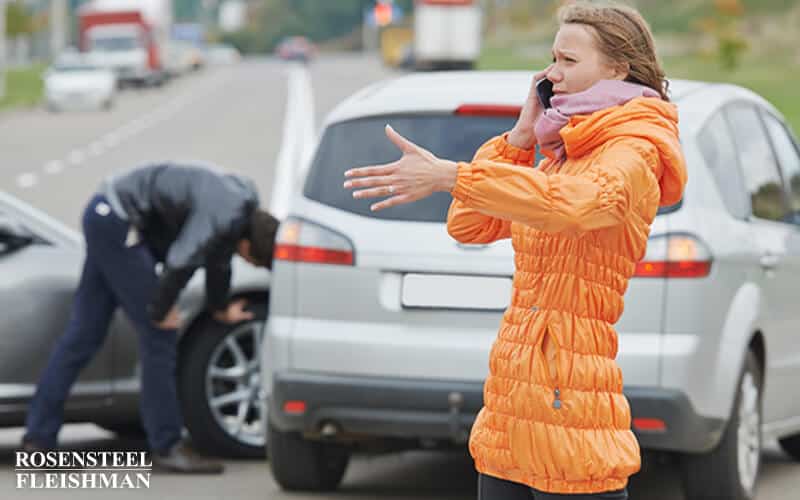After a car accident, things can get overwhelming fast. Between dealing with injuries, car repairs, and insurance phone calls, it’s easy to feel like everything is happening all at once. On top of all that, trying to understand your legal options while recovering can feel like too much to handle. Many people aren’t sure what […]

Negligence of Emergency Vehicles in North Carolina
Typically, when a motorist is involved in an accident and was going above the speed limit, that person is negligent per se, meaning that they have violated a statute designed to protect the public and proof of the violation is equal to proof of negligence. In that case, an injured party must only show proximate cause. However, North Carolina statute specifically exempts emergency vehicles from having to comply with speed limitations. In most cases where an emergency vehicle is involved in an accident and was going above the speed limit, an injured party must prove that “the driver of any such vehicle from the consequence of a reckless disregard of the safety of others.”
G.S. 20-145 states that
The speed limitations set forth in this Article shall not apply to vehicles when operated with due regard for safety under the direction of the police in the chase or apprehension of violators of the law or of persons charged with or suspected of any such violation, nor to fire department or fire patrol vehicles when traveling in response to a fire alarm, nor to public or private ambulances and rescue squad emergency service vehicles when traveling in emergencies, nor to vehicles operated by county fire marshals and civil preparedness coordinators when traveling in the performances of their duties, nor to any of the following when either operated by a law enforcement officer in the chase or apprehension of violators of the law or of persons charged with or suspected of any such violation, when traveling in response to a fire alarm, or for other emergency response purposes: (i) a vehicle operated by the Division of Marine Fisheries or the Division of Parks and Recreation of the Department of Environment and Natural Resources or (ii) a vehicle operated by the North Carolina Forest Service of the Department of Agriculture and Consumer Services. This exemption shall not, however, protect the driver of any such vehicle from the consequence of a reckless disregard of the safety of others.
The North Carolina Supreme Court has held that this exemption does not apply only to police vehicles involved in a chase but also to police vehicles responding to a distress call from another officer. In the 2005 case, Jones v. City of Durham, an officer responding to a distress call from another officer travelled at a speed between 45 and 60 miles per hour, in a 35 mph zone, through a residential area. Shortly after 9:00 a.m., a pedestrian was crossing a street in the area. Although she heard the police vehicle’s siren, she could not tell which direction it was coming from. She saw the police vehicle coming towards her while she was in the middle of the street and turned back to return to where she had come from. The police officer anticipated that she would continue crossing the street and swerved to avoid her, but instead hit the pedestrian, causing her severe injuries.
The Court looked at the text of G.S. 20-145 and stated that
In enacting this statutory exemption to our motor vehicle speed limits, it was clearly the intent of the legislature to extend speed limit exemptions beyond mere police pursuits, to include all emergency service vehicles, including police and even "civil preparedness coordinators," "when traveling in emergencies ... in the performances of their duties."
The Court went on to hold that “the standard of negligence by which a law enforcement officer must be judged when acting within N.C.G.S. § 20-145 is that of "gross negligence" as to the speed and operation of his vehicle,” which it equated to situations “where the responder recklessly disregards the safety of others.”
To determine whether the law enforcement officer has acted with gross negligence under G.S. 20-145, the Court stated that we must looked at three factors:
(1) the circumstances initiating the event or the reason why the officer became involved in an event of increased speed; (2) when and where the event of increased speed occurred; and (3) what specific conduct or actions the officer undertook during the course of the event of increased speed.
Applying the first factor to the facts of the case, the Court recognized that they had previously “held a law enforcement officer was not grossly negligent for pursuing a suspect who violated a mere safety infraction.” Therefore, the Court held, the police officer’s response to another officer’s “two distress calls in a possible life or death situation was a justifiable event of increased speed.”
In analyzing the second factor, the Court noted that the officer “drove his vehicle at a speed of 45 to 60 miles per hour on a cool, clear, and dry morning, with his siren activated, for a distance of two and one-half miles in light traffic through a residential area.” The Court reviewed several other North Carolina cases and determined that “[t]hese circumstances surrounding the timing and location of [the officer’s] event of increased speed were considerably less dangerous to others than those found in [those] cases.”
Lastly, the Court looked at the officer’s specific conduct and noted that the relevant conduct was the officer’s driving speed and his evasive maneuver in attempting to avoid the plaintiff. The Court determined that “[t]raveling 10 to 25 miles per hour over the speed limit by a law enforcement officer in an emergency situation is not conduct which supports a finding of gross negligence” because North Carolina courts have previously found this speed differential, as well as those far greater, not to be indicative of gross negligence. With regard to the officer’s evasive maneuver, the Court held that the plaintiff failed to forecast “evidence of ‘conduct done with conscious or reckless disregard for the rights and safety of others’ regarding [the officer’s] decision to perform such a maneuver, rather than attempting to stop, upon seeing plaintiff on the double yellow line two-thirds of the way across” the street. In fact, the law enforcement training manual stated that one way to avoid a collision was to perform such a maneuver.
Therefore, the Court held that the defendant was properly granted summary judgment because the plaintiff failed to forecast evidence which presented a genuine issue of material fact regarding the officer’s gross negligence.
Since Jones, the court of appeals has expanded on the North Carolina Supreme Court’s analysis. In Greene v. City of Greenville (2013), the court of appeals stated that under the Court’s first prong, relevant considerations “include whether the officer ‘was attempting to apprehend someone suspected of violating the law’ and whether the suspect could be apprehended by means other than high speed chase.” Under the second prong, a court should “look to the (1) time and location of the pursuit, (2) the population of the area, (3) the terrain for the chase, (4) traffic conditions, (5) the speed limit, (6) weather conditions, and (7) the length and duration of the pursuit.” Finally, under the third prong, “[r]elevant factors include (1) whether an officer made use of the lights or siren, (2) whether the pursuit resulted in a collision, (3) whether an officer maintained control of the cruiser, (4) whether an officer followed department policies for pursuits, and (5) the speed of the pursuit.”
Finally, it is important to note that in Greene, the court of appeals stated that “North Carolina's standard of gross negligence, with regard to police pursuits, is very high and rarely met” and, “we can find no case where this Court or our Supreme Court has found that gross negligence existed.”
If you have been injured in a car accident, contact an attorney at Rosensteel Fleishman Car Accident & Injury Lawyers (704) 714-1450, to discuss your options.
Additional Car Accident Articles
Being in a car accident is stressful enough, but the situation can become even more complicated if the other driver doesn’t have insurance. It’s one of those moments where confusion and frustration collide, especially when you’re stuck with damage to your vehicle or even injuries. Many people in Charlotte find themselves in this exact situation, […]
Getting into a car accident can throw everything into chaos in a matter of seconds. Whether it’s a fender-bender or something more serious, the moments afterward are often filled with questions, stress, and uncertainty. You might be wondering what your next move should be, especially if the damage is more than just physical. If you're […]
Getting into a car accident can throw everything off balance. One moment you're running errands or heading home from work, and the next you're dealing with a damaged vehicle, lingering soreness, and a pile of unanswered questions. It's easy to feel overwhelmed, especially when you're unsure what to do next or who you can turn […]
